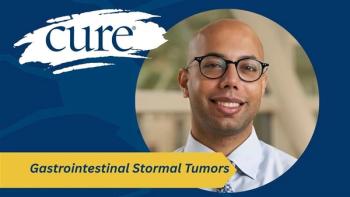
- Extraordinary Healer Vol. 19
- Volume 19
Guiding Light: A Journey of Support and Hope

Key Takeaways
- Christine Simonelli prioritizes comprehensive patient assessments, addressing unique disease and treatment needs, and often goes beyond her duties to support colleagues and patients.
- She is involved in nursing research, focusing on the financial impact of cancer care, and is a sought-after preceptor for new hires.
Christine Simonelli, B.S.N., RN, CCRC, OCN, is amazing, and goes out of her way to help patients and providers.
Christine Simonelli, B.S.N., RN, CCRC, OCN, is amazing!
Patient care: She goes out of her way to help providers. She sees every patient in her clinic, not just those who screen positive, because she will tell you that many more questions need to be asked, especially regarding symptom management and social needs — each patient’s disease and treatment are unique. Although she can work from home on Fridays, she often comes in to lend a hand. One nurse practitioner, upon learning that Christine had come in to assist her in clinic, exclaimed how excited she was to be working with her — she knew it was going to be a good Friday.
Nursing systems: Christine is collaborating with me on leading a nursing research study (mixed-methods design) on the financial impact care can impose on patients with cancer or hematologic diseases. She is passionate about this and looking forward to analyzing data to improve care and resources. She is also a sought-after preceptor for new hires.
Professional service: Christine serves on the board of our Oncology Nursing Society chapter as membership chair. Her passion for encouraging membership from local hospitals is indescribable. She has created welcome letters and reminder emails for membership renewal. She is a great ambassador for oncology nursing, always smiling, lending a hand and putting her patients first. She never complains. I cannot think of anyone more deserving.
Here is a story exemplifying her extraordinary care that she shared with me:
“I remember meeting Mr. Z for the first time, a legally blind gentleman with such a positive outlook. He came to his new patient appointment a couple of years back alone, and I couldn’t fathom how he made his way into the building and all the way to our clinic without assistance. I remember guiding him to check out, and the Patient Service Representative telling me she would get him to his community transportation outside. What I remember most about that day was coming home from work and placing him in my prayers: Please God, don’t let this man’s disease ever become active and require treatment. Thankfully, we were able to watch him with surveillance labs quarterly for almost two years without therapy. During that time frame, he never brought anyone with him to his appointments and was not very forthcoming with details of his personal life other than that he lived alone and was very independent. What I feared most came to fruition this past year, with his disease becoming active and requiring initiation of treatment. I remember that day well.
“I remember the physician’s concern: Could we place him on a study, as he was a young, healthy patient who could potentially benefit from a novel treatment regimen? … This was very different from my initial concern of how we could even safely give this man therapy. So many questions ran through my head, how could he be accountable to take an oral oncolytic at home, what if he took the wrong pills, what if he got sick in the middle of the night, how would he be able to reach us or get to us, what if he had a fever, how would he even know he had a fever if he couldn’t read a thermometer? Who would be there to care for him? The questions were endless.
“I felt very uncomfortable asking him direct questions about potential caregivers as it was clear that he really didn’t wish to involve anyone. Our social worker was wonderful and helped him to realize that he was going to need the assistance of his family and how to discuss this with his family. The trials office was consulted, and it was determined that the patient could consent after the consent was verbally read to him and all questions answered to his satisfaction. I couldn’t have been any happier with this as I knew there would be an extra layer of care built into his treatment plan. He would have even more eyes watching out for him.
His road has not been without a few stumbles, but he has had much support to assist him through his journey
“I was on a mission that day. I knew we had to succeed in making this a smooth transition from observation to treatment and that I needed to make certain not only did I have all of my questions answered, but that my patient did too. I left work that day and spent the next few days searching the web for solutions, reaching out to local community resources, and searching drugstores for pill dispensers that would benefit a patient who had not been previously on any medications. Thanks to Amazon Prime, by the time Monday arrived, we had a talking thermometer and 3 different pill dispensers. Through research, I found that Walgreens has a program for the visually impaired where talking pill caps can be placed on prescriptions free of charge. Each of his prescriptions was programmed with alarms to remind him of when to take them and [the bottles would] read the prescription directions to him with the push of a button.
“We spent time practicing using the thermometer as well as opening the pill bottles and listening to the label directions. Home Health was consulted to do a home safety evaluation and set up medications. The clinical trial coordinator and I programmed our work telephone numbers into his iPhone so that he could call with voice control.
“But the best part was coming into the clinic on the day he signed consent to find three older doting sisters by his side. Each had a multitude of questions not only about the disease and the clinical trial, but how on earth their brother had been coming to Moffitt Cancer Center by himself for over a year and a half without them even knowing he had been battling this on his own. It was amazing, each eager to assist! It made my heart happy that this man had more support than many and that everything was falling into place. His road has not been without a few stumbles, but he has had much support to assist him through his journey.”
For more news on cancer updates, research and education, don’t forget to
Articles in this issue
6 months ago
A Unicorn Among Us6 months ago
Helping the Team While Helping Others6 months ago
True Grit: The Spirit of an Extraordinary Healer7 months ago
A Trailblazer in Oncology Nursing and Research7 months ago
A Lifelong Advocate and Innovator




